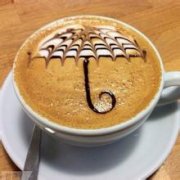Indian Coffee Bean Origin History and Culture

The Shepherd's Story: According to a Roman linguist, Rostener Loy,(1613-1707): About the sixth century A. D., there was an Arab shepherd named Kardi who was driving sheep to the Ethiopian steppe to graze. He found it strange to see that every goat was extremely excited and excited. Later, after careful observation, he discovered that these sheep were excited because they ate some red fruits. Kardi tasted some curiously and found that these fruits were very sweet and delicious. After eating, he felt very refreshed. From then on, he often drove his flock to eat this delicious fruit. Later, a Muslim passing through here picked some of this magical red fruit and took it home, and shared it with other believers, so its magical effect spread.
The Story of Shelly Omar
Other legends refer to Sheik, the patron saint of the Arabian Peninsula. Kal's disciple Sheik Omar was a respected and beloved chieftain in Mocha, but was expelled by his people for his crimes. Shelly. Omar was therefore exiled to Osam in that country, where coffee fruit was accidentally discovered in 1258. One day, Omar was walking in the forest hungry. He saw birds with strange feathers on the branches pecking at the fruits on the trees and making extremely sweet chirps. He brought the fruit back and boiled it with water. Unexpectedly, it emitted a rich and attractive fragrance. After drinking it, the original fatigue was also eliminated, and he was full of vitality. Omar gathered many of these magical fruits, and when he met someone who was sick, he made soup from the fruit and gave them to drink, and they recovered their spirits. He was loved by his followers for his good deeds, and soon his sins were forgiven. He returned to Mocha and was praised for discovering this fruit, and he was honored as a saint. And the magic cure at that time was said to be coffee.
The Story of De Klee
This is a romantic story. Gabrielle, a French naval officer serving in Matinique circa 1720 or 1723. Mathieu. de Klee managed to get some coffee trees just before he left Paris and decided to take them back to Martinique, where he had been carefully tending to the saplings, keeping them in a glass box on deck to keep them warm from the sea. de Klee suffered pirates on his journey, storms, shipmates 'jealousy and destruction, and even saved his own drinking water to water the sapling when drinking water was scarce. His coffee trees finally took root in Martinique, where they were harvested for the first time in 1726. It is said that Martinique had 18791680 coffee trees by 1777. Gabriel. Mathieu. de Klee was instrumental. Gabriel Mathieu. de Cleary died in Paris on November 30, 1724, and a monument to him was erected in Martinique in 1918 at the Jardin des Fords.
In the 19th century, American anthropologist Morton and Argentine paleontologist Amerigino put forward the idea that Indians originated in America. However, this theory simply does not hold water, because up to now, no ape-man fossils representing human evolution have been found on the American continent, and archaeological data prove that only monkeys are not apes in America. So where did the Indians come from? What race do they belong to? There are different opinions on this issue in the academic community. Some scholars believe that Indians came from Africa, some scholars believe that they came from Europe, and some scholars believe that they came from islands in the South Pacific. For a long time, many people even thought that Indians belonged to Jews, descendants of the legendary missing ten. Academic opinions vary, and there is no consensus. However, with the unremitting efforts of archaeologists and the rapid development of genetic science, the academic community generally agrees that the ancestors of Indians crossed the Bering Strait from Asia to America.
Important Notice :
前街咖啡 FrontStreet Coffee has moved to new addredd:
FrontStreet Coffee Address: 315,Donghua East Road,GuangZhou
Tel:020 38364473
- Prev

The treatment method of grinding degree and baking degree of Guatemala Agua Dursai boutique coffee beans
Using slow extraction instead of hot water extraction can better bring out the sweetness and smooth taste of the coffee itself. Joe sensed the confusion on the editor's face and then explained: unlike the traditional iced coffee made by rapid brewing with hot water and rapid cooling of ice cubes, cold extracted iced coffee with slow extraction is like stewing a pot of hot soup over low heat, so that the taste can be mellow and fragrant.
- Next

Sour and sweet fruit description of El Salvador Pacamara boutique coffee bean flavor and taste
Finca Ataisi Manor is located in the volcanic producing area of Izalco (Izakou) region, Sonsonate Province, El Salvador. Due to volcanoes, the soil of the manor is very rich in organic matter. The average elevation of the manor is about 1800 meters and the terrain is steep. It is one of the highest estates in the area. At present, the owner of the manor is managed by Mr. Rene Martin, the owner of the manor, and Rene Martin first.
Related
- Detailed explanation of Jadeite planting Land in Panamanian Jadeite Manor introduction to the grading system of Jadeite competitive bidding, Red bid, Green bid and Rose Summer
- Story of Coffee planting in Brenka region of Costa Rica Stonehenge Manor anaerobic heavy honey treatment of flavor mouth
- What's on the barrel of Blue Mountain Coffee beans?
- Can American coffee also pull flowers? How to use hot American style to pull out a good-looking pattern?
- Can you make a cold extract with coffee beans? What is the right proportion for cold-extracted coffee formula?
- Indonesian PWN Gold Mandrine Coffee Origin Features Flavor How to Chong? Mandolin coffee is American.
- A brief introduction to the flavor characteristics of Brazilian yellow bourbon coffee beans
- What is the effect of different water quality on the flavor of cold-extracted coffee? What kind of water is best for brewing coffee?
- Why do you think of Rose Summer whenever you mention Panamanian coffee?
- Introduction to the characteristics of authentic blue mountain coffee bean producing areas? What is the CIB Coffee Authority in Jamaica?

